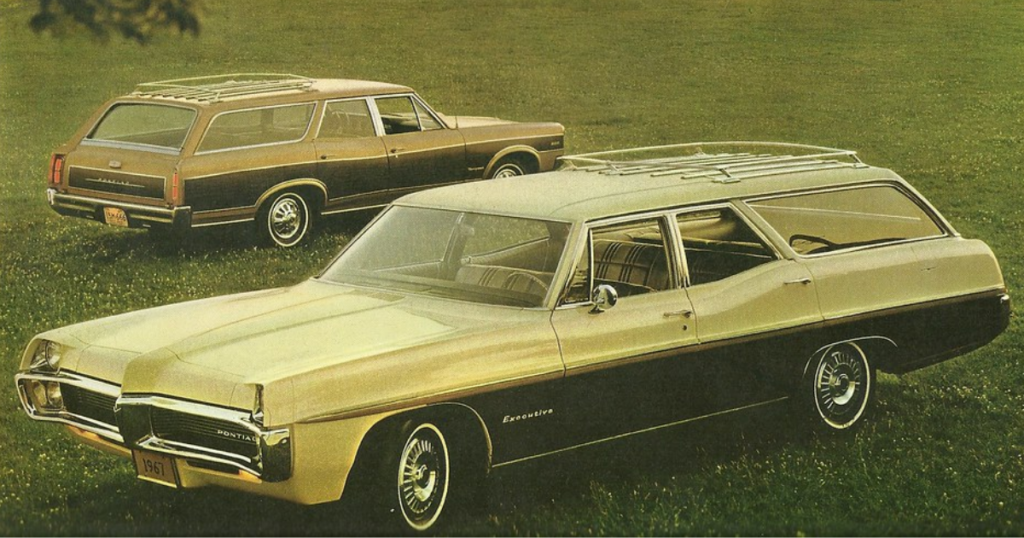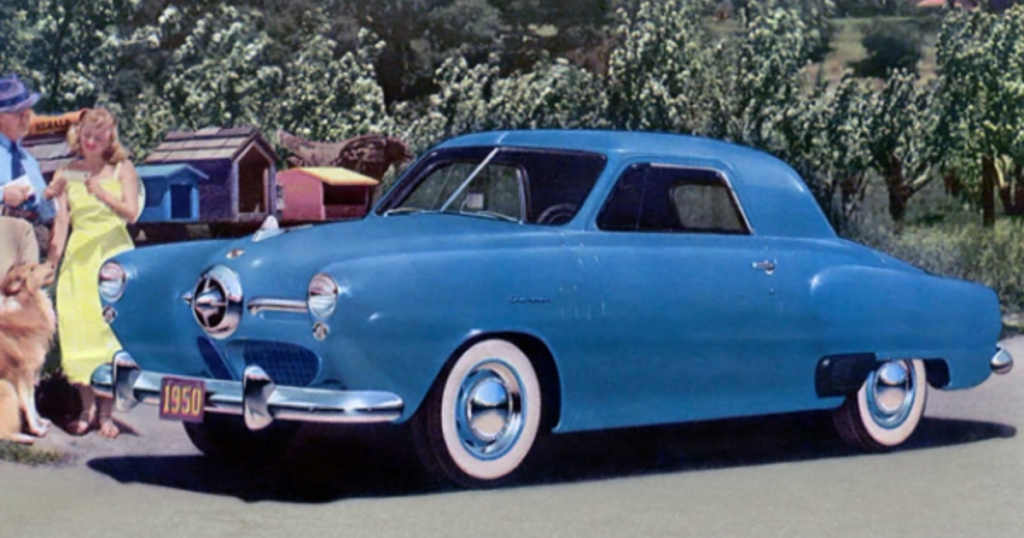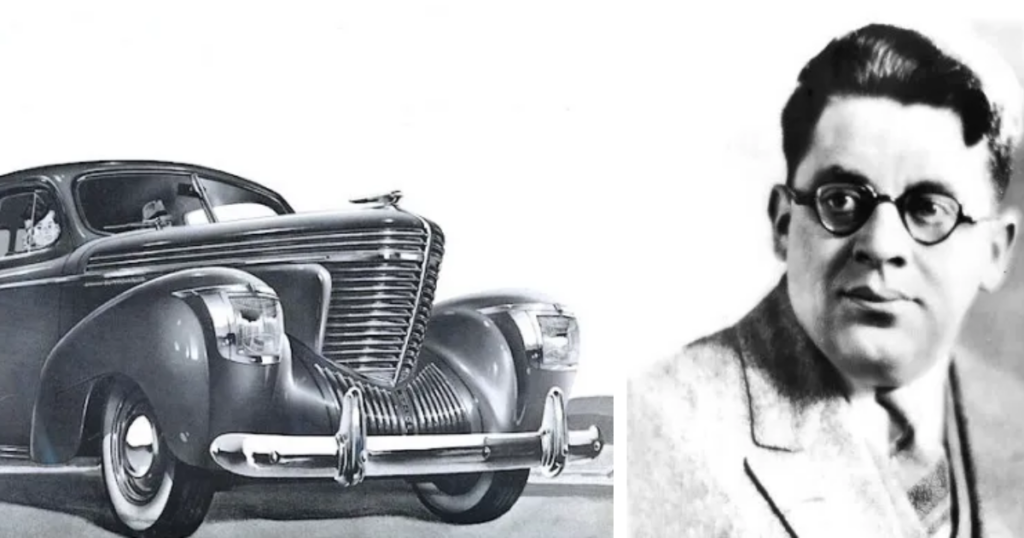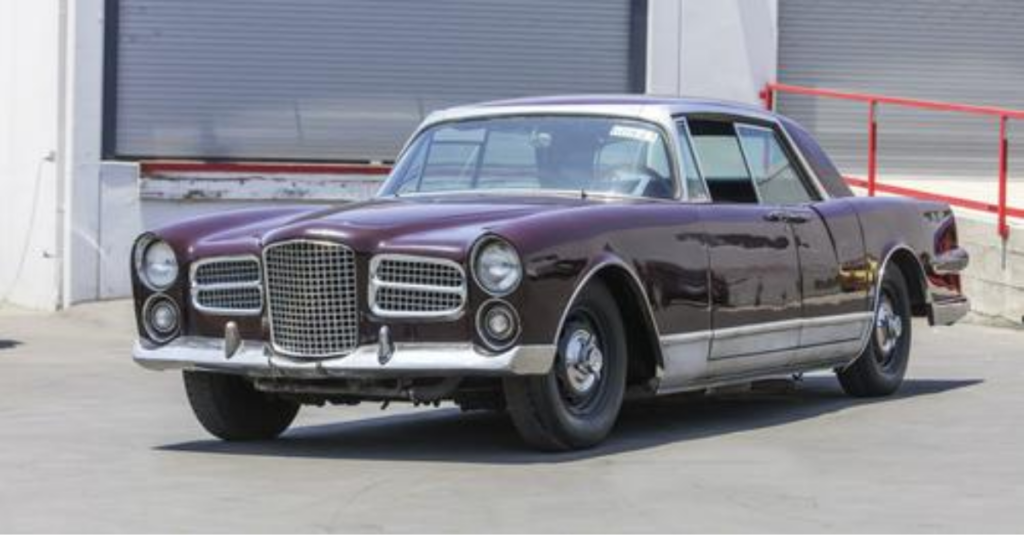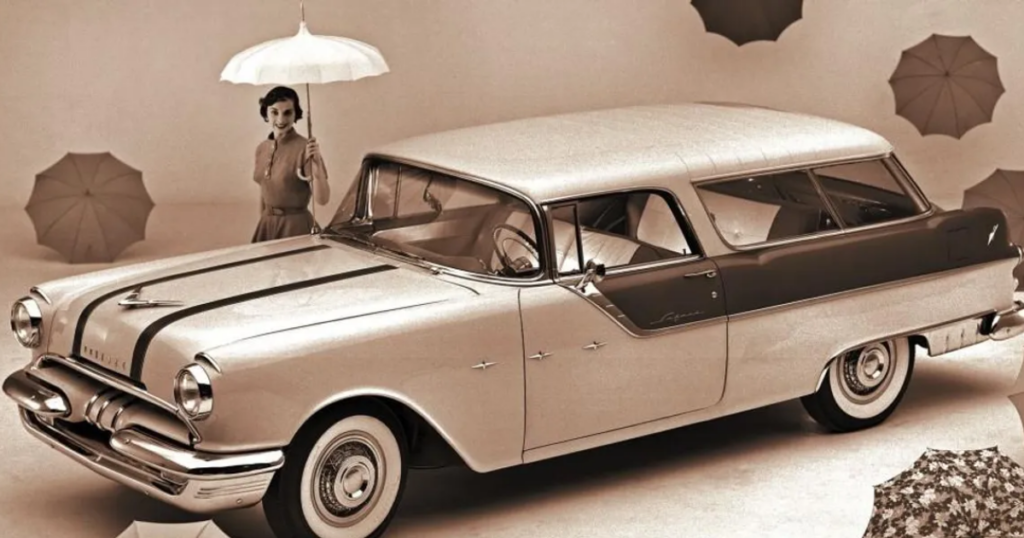
The 1955 Pontiac Safari had its roots in the Chevrolet Nomad, a sport-luxury station wagon showcased in a dream-car version at the 1954 Motorama and subsequently put into production for the 1955 model year. Following the success of the Nomad, GM’s styling chief, Harley Earl, proposed a Pontiac version to the division’s top management. This resulted in the introduction of the Pontiac Safari as a mid-year model on January 31, 1955.
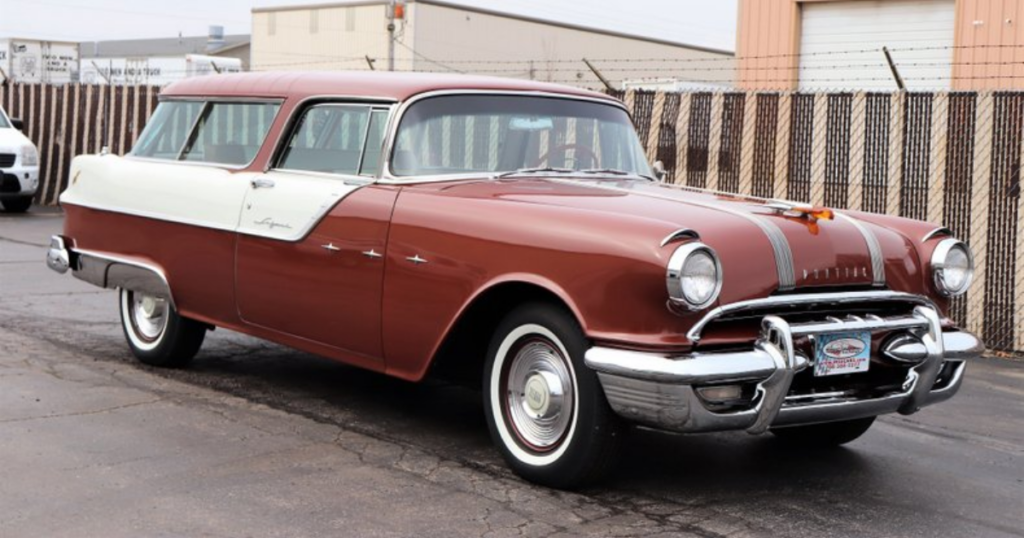
While the Nomad and Safari shared a common overall theme and swept-back two-door greenhouse, there were notable differences. The Safari, built on Pontiac’s longer 122-inch Chieftain package, featured the premium trim of the even larger 124-inch Star Chief model. Officially named the Custom Star Chief Safari, it is commonly known as the Safari.
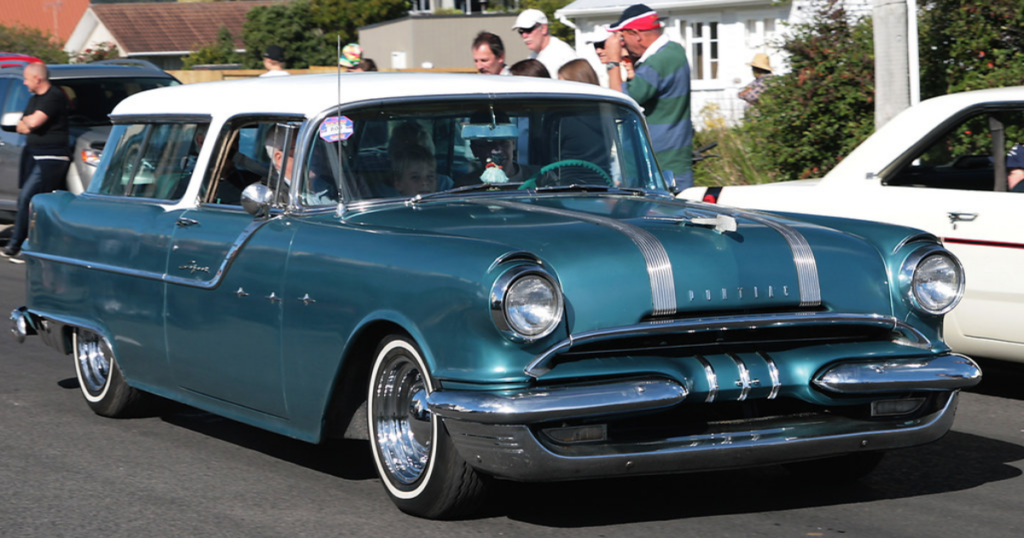
Despite sharing some components, the Safari was distinct, offering a more extended and elegant appearance on the Pontiac platform. Priced at $2,962, it was approximately $500 more expensive than the Nomad but came with additional standard features, including a 287 cubic-inch V8 engine and leather upholstery, compared to the Nomad’s Stovebolt 6 and fabric interior. Due to Pontiac’s lower production volume, the Safari sold in fewer numbers, around 9,000 units during the 1955-1957 model run, in contrast to the Nomad’s 22,000 units.
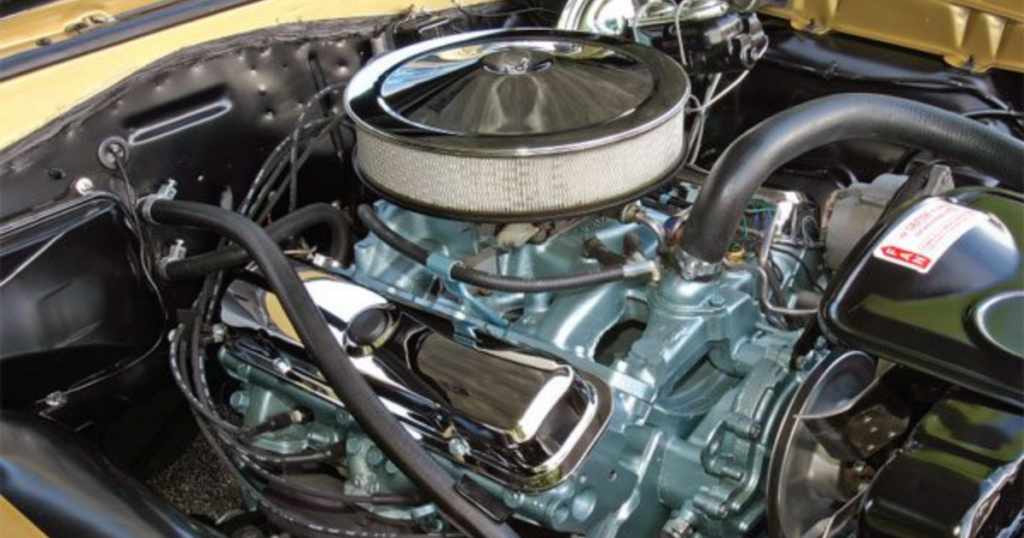
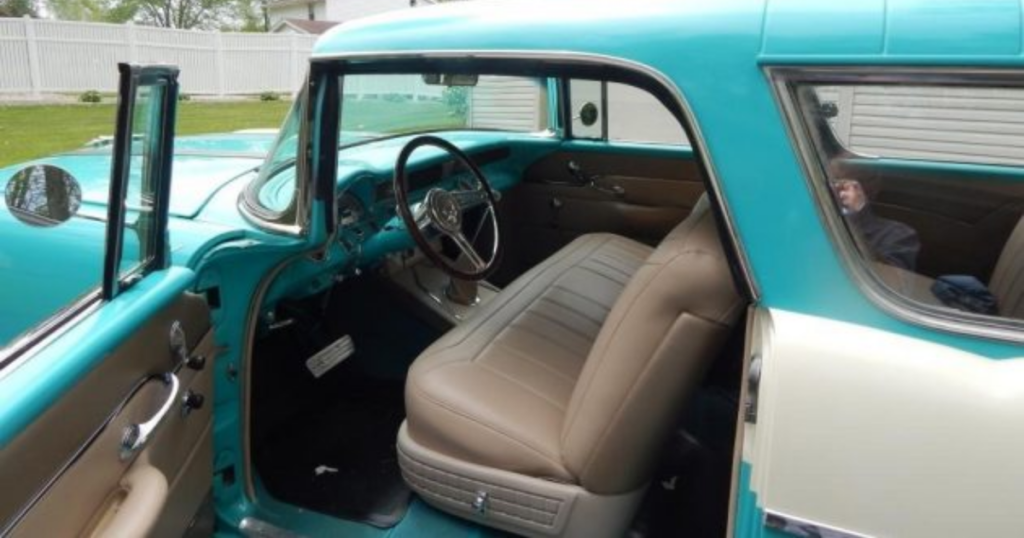
The Safari received annual updates in mechanical and styling aspects for the 1956 and 1957 model years. However, in 1957, Pontiac expanded the use of the Safari name to include all the station wagons in the catalog, not just the two-door sport-luxury model. This naming convention persisted, with the Safari label being applied to various Pontiac wagon models until 1991. Furthermore, from 1985 to 2005, the Safari badge was also utilized on a GMC minivan.

In summary, the Pontiac Safari, born from the success of the Chevrolet Nomad, distinguished itself with a longer wheelbase and premium trim. Despite its higher price, it offered more standard features, contributing to its unique appeal. The Safari name endured, becoming synonymous with Pontiac station wagons for several decades, leaving a lasting legacy in automotive history.
